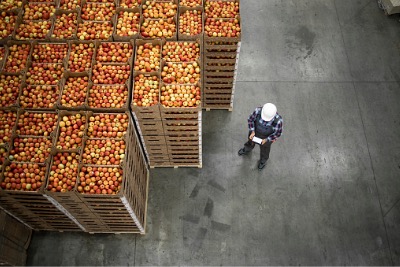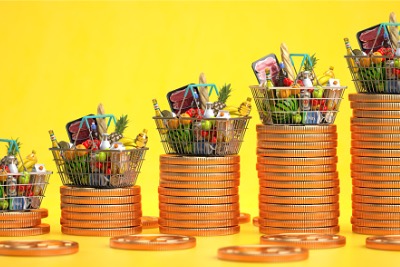
Why is food so expensive these days?
Just about everyone who has made a trip to the supermarket or ordered groceries online has felt the pinch of higher food products. According to the Bureau of Labor Statistics, food prices have increased by 5.3%. According to the USDA consumer price index, meat prices are up by 7.5%, seafood by 5% and eggs by 4% on average. The USDA expects food prices to increase in 2022 and does not expect income and wages to keep up with inflation.

Why is the Cost of Food Increasing?
- Increase in the price of inputs: Across the food and beverage industry there has been a rise in the cost of inputs like raw materials, energy, animal feed, and labor. Those costs are passed on to consumers.
- Declines in food production: As a result of the pandemic, there are shortages in labor and raw materials. In some cases, food producers cannot keep up with demand.
- Changes in demand: The pandemic has changed demand. There is less demand for food service products and more demand for grocery products. While this effect has lost some steam during the recovery, many consumers have decided to remain home cooks. In addition, the food service sector from large venues to small mom and pop shops continues to feel the economic effects of the pandemic. Restaurant prices have also increased due to the increased cost of labor.

- Supply Chain issues: There are capacity and labor shortages across the supply chain. If a processor cannot source ingredients, even simple ones like salt or sugar, that leads to delays in production. If they are unable to transport or store a product, there are delays. Supply chain issues will likely be resolved later in 2022.
- Government Policy: Interest rates remain low, so there is increased borrowing and increased demand for goods. This leads to inflation. In addition, fewer migrants and immigrants are able to work in the USA, exacerbating the labor shortage on farms and in processing plants. And government spending, while necessary, is likely to contribute to increasing costs due to supply and demand.
- The “China Tariff”: The China Tariff has led to increased prices. The USA imports billions of dollars in food from China every year. Some imports include, tea, apple juice, tilapia, mushrooms, garlic, and other fruits and vegetables.
The outlook for 2022 is optimistic. While food prices continue to increase, the USDA expects that they will not increase at the same high rate as 2021. And in late 2022 and early 2023, they are expected to stabilize.

What about Consumer Demand?
In times of increasing prices, consumers look for more value-added products. According to the IRi Consumer Packaged Goods (CPG) Review and Outlook, in 2021 most food consumers returned to convenience, self-care, indulgence food purchases. Millennials and Gen Xers are looking for convenience. Boomers and Seniors are looking for indulgence foods. Intergenerationally, consumers are seeking value for money and self-care. Food needs to be functional, healthy, convenient and tasty. Retailers are seeing an increase in demand for frozen and prepared foods. These trends are expected to continue.
Although food prices are increasing, consumers are still willing to pay for quality food and beverage. Halal certification from ISA is a seal of quality for many consumers. To learn more about Halal certification with ISA contact info@isahalal.com.
